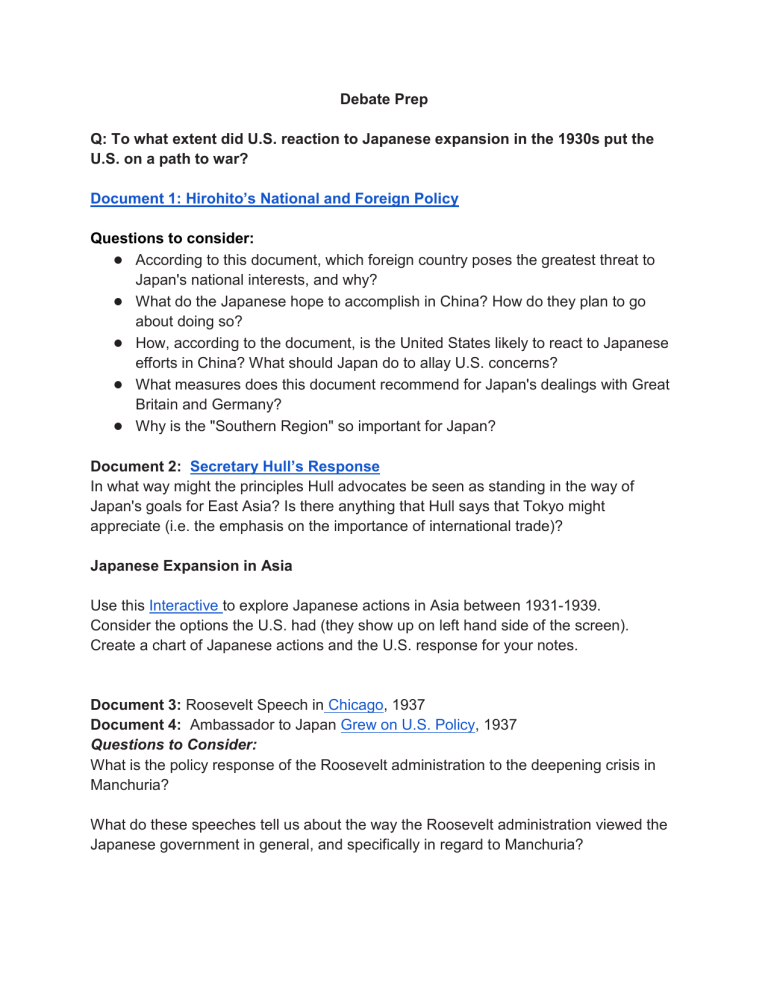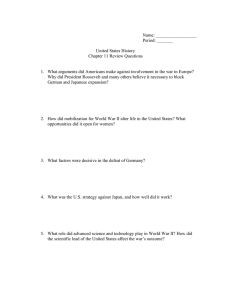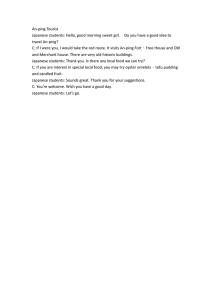
Debate Prep Q: To what extent did U.S. reaction to Japanese expansion in the 1930s put the U.S. on a path to war? Document 1: Hirohito’s National and Foreign Policy Questions to consider: ● According to this document, which foreign country poses the greatest threat to Japan's national interests, and why? ● What do the Japanese hope to accomplish in China? How do they plan to go about doing so? ● How, according to the document, is the United States likely to react to Japanese efforts in China? What should Japan do to allay U.S. concerns? ● What measures does this document recommend for Japan's dealings with Great Britain and Germany? ● Why is the "Southern Region" so important for Japan? Document 2: Secretary Hull’s Response In what way might the principles Hull advocates be seen as standing in the way of Japan's goals for East Asia? Is there anything that Hull says that Tokyo might appreciate (i.e. the emphasis on the importance of international trade)? Japanese Expansion in Asia Use this Interactive to explore Japanese actions in Asia between 1931-1939. Consider the options the U.S. had (they show up on left hand side of the screen). Create a chart of Japanese actions and the U.S. response for your notes. Document 3: Roosevelt Speech in Chicago, 1937 Document 4: Ambassador to Japan Grew on U.S. Policy, 1937 Questions to Consider: What is the policy response of the Roosevelt administration to the deepening crisis in Manchuria? What do these speeches tell us about the way the Roosevelt administration viewed the Japanese government in general, and specifically in regard to Manchuria?



